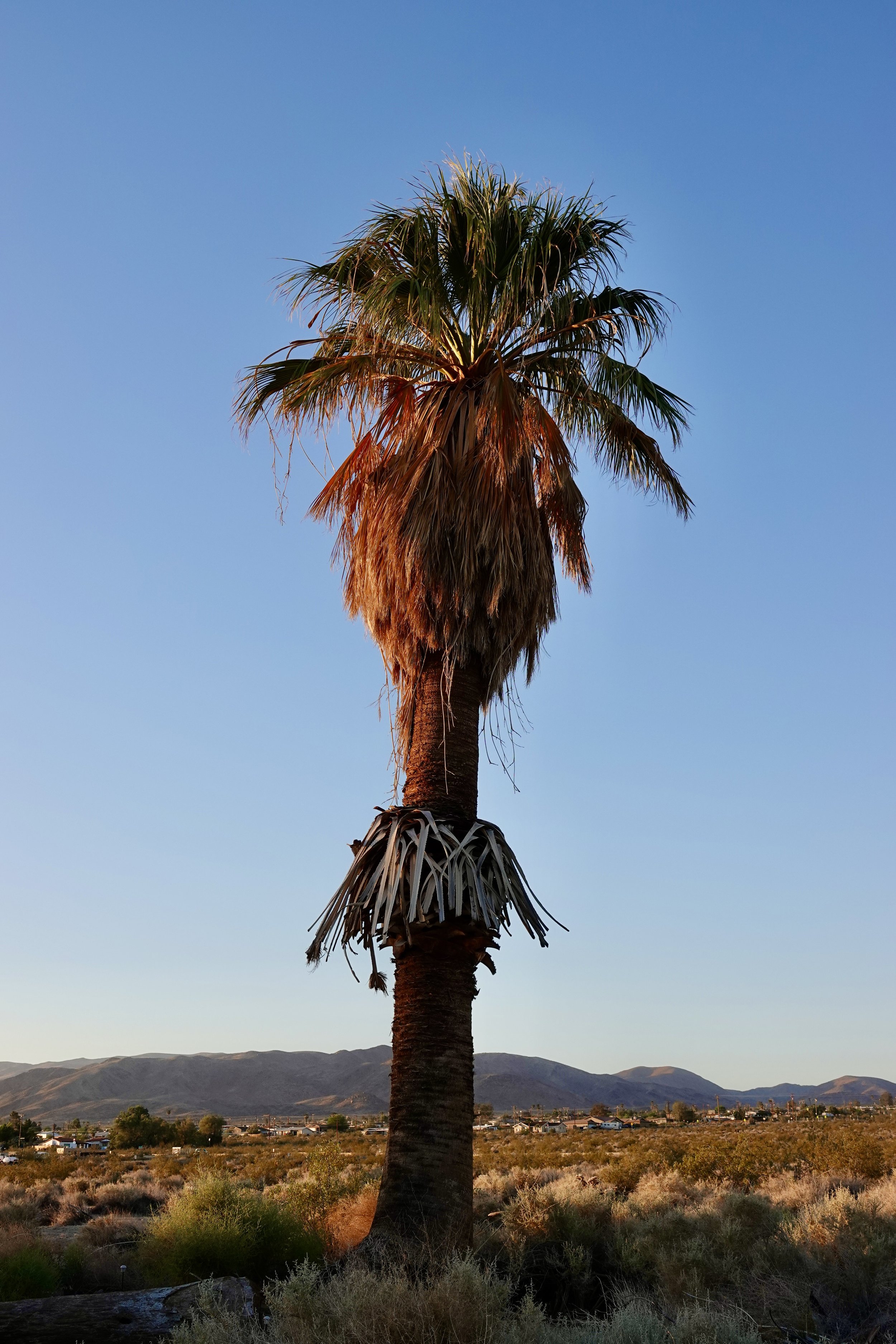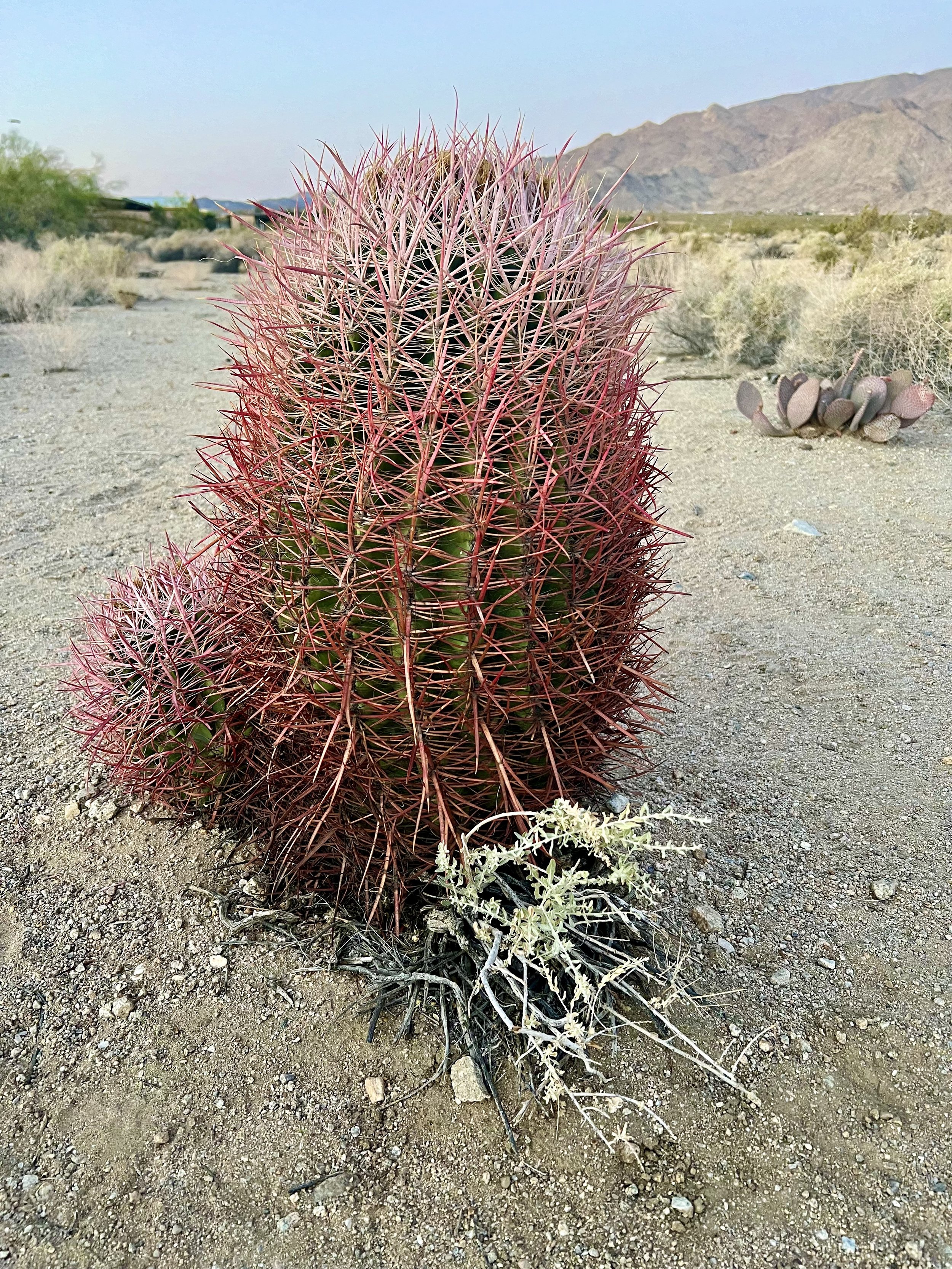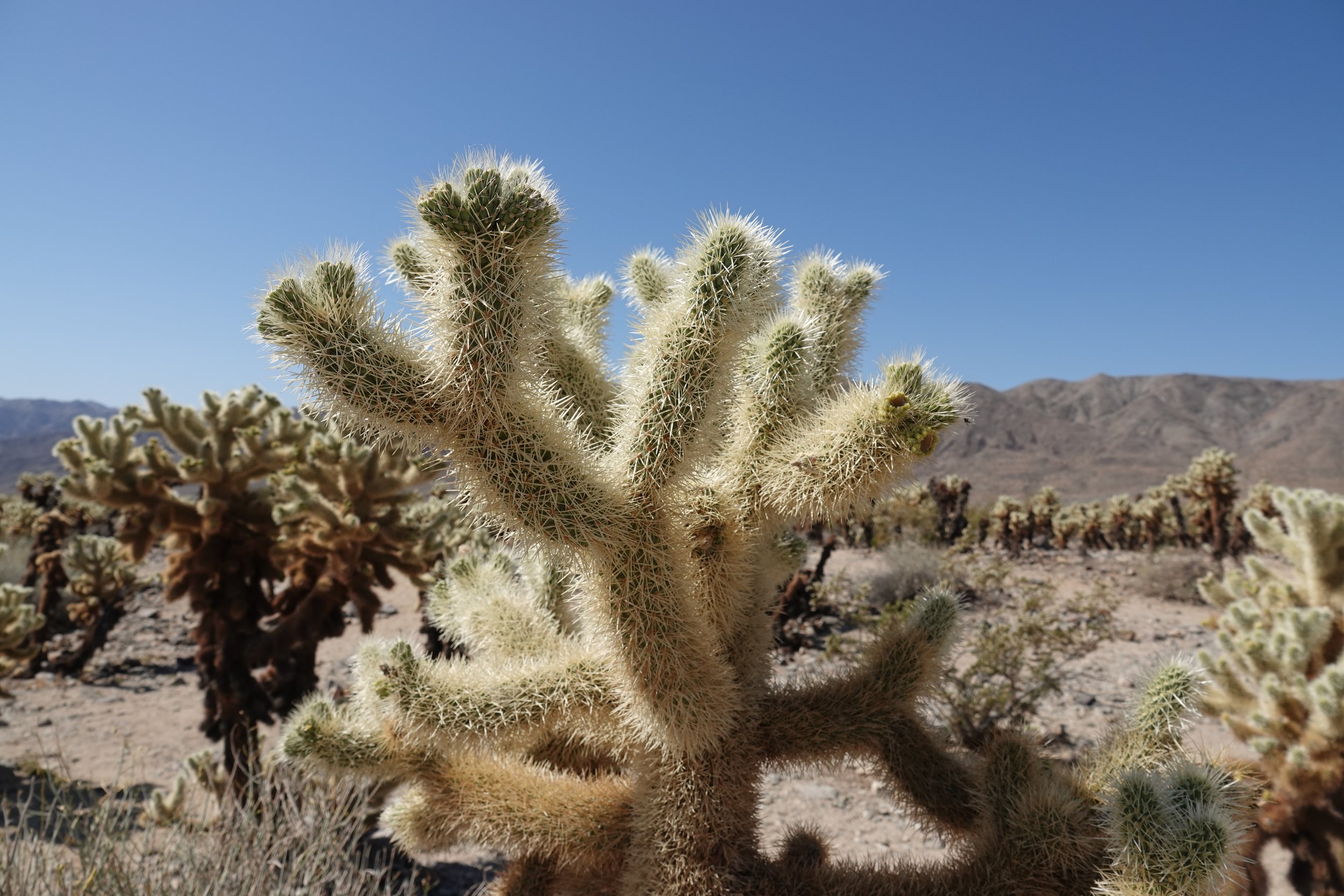Joshua Tree National Park, California
Straddling two deserts, the Mojave and the Colorado, Joshua Tree National Park in southeast California is of course often very hot and almost always dry, but far more biologically bountiful than most of us assume, especially those of us from the lush lands of Connecticut.
Yucca species, cactuses, junipers, wildflowers galore, butterflies, mammals, snakes - hundreds of species.
But the star of the park is the Joshua Tree, a tree so unusual it indeed deserves a national park to exhibit the species on a grand scale, like the massive Redwoods and Sequoias to the north. Unusual in this case does not mean large - most Joshua trees are perhaps 20 feet high - but they are very different from your usual tree.
Some say they are odd-looking, charming in their odd-ness, including their name.
As the story goes, the Mormons gave the tree its name. In “A Natural History of Western Trees,” by Donald Culross Peattie, a classic in nature writing first published in 1950, he says that the Mormon leader Brigham Young called upon a Mormon Colony in San Bernardino to join him in Utah. On its way to Utah, the colony came upon these strikingly different trees. Their shaggy, hoary bark seemed to the Mormons like some bearded Old Testament prophet. Encountering them sporadically as they continued their journey, they concluded these trees were leading the way to the promised land. They named them Joshua Trees.
The tree is plenty distinctive enough without needing a biblical moniker to confuse things, in my view. It also is known as Yucca Palm. It is in fact, a yucca. Peattie says another name is tree yucca. I like that, even if it perhaps was long ago forgotten. Better yet, why not spiny-tipped yucca? Perhaps the most distinguishing feature of this tree are the balls of spike-like vegetation at the tips of its branches.
Yes, we can call these trees odd - they may be to us - but they are organisms that evolved to be what they are, living in a difficult environment of high temperatures and little water.
I happen to be reading the just-released “The Light Eaters: How the Unseen World of Plant Intelligence Offers a New Understanding of Life on Earth,” by Zoe Schlanger. If the cutting edge science she reports on is correct, and I think it is, these and other tree species are sentient, possessing some kind of “intelligence,” however unlike ours. Experiments indicate trees can communicate, can hear, can sense touch, sense predators, even produce chemical changes in their leaves to repel or kill predators.
You could argue we have a nerve calling Joshua Trees odd. (Peattie, who clearly found them charming, called them “the strangest tree in North America.”) But is this tree any odder than we are as a species - with countries still fighting wars with massive loss of life for thousands of years now?
I, too, find spiny-tipped yuccas charming. In places they spread over the landscape for acres, as if in a museum, people stopping and standing by their cars for a closer look. Many other organisms use the Joshua Tree, including Scott’s oriole, which suspends its nests from the branches, and ladder-backed woodpeckers, which drill holes for nests in Joshua trees.
For an introduction to the park, my wife, Susan, and I took the Park Boulevard, which wends its way by many of the best sights in the park, beginning at one end of the park and ending at the other, a total of about 25 miles. Add some of the side roads along the boulevard and you will see many more highlights.
One morning I was up at 4:30 and drove to the park headquarters at the edge of Twentynine Palms, the town at the east end of the park. Adjacent to the headquarters is a trail through the Oasis of Mara, a true oasis fed by a spring with plenty of bird life. At 5:15 in early morning muted light before the sun even came up, I stepped onto the trail - nobody around, the first person on the trail - and immediately flushed a large bird, an owl, from a California fan palm, yet another very distinctive tree. The dead leaves of a fan palm droop down and form a “skirt” that bellows out from the trunk, new green palm leaves rising above the dead brown ones. This bird flew out of the skirt on a palm beside me and flew quickly to another California fan palm only about 20 feet away. As it did, a raven perched on a dead tree nearby immediately flew at the owl - a barn owl - and began harassing it, squawking loudly as it perched a few feet away. Ravens and crows, by the way, hate owls and will sometimes gather in groups to mob them until they flee.
The owl, after glaring directly at me for maybe 2 seconds, as if to figuratively give me the bird, then maneuvered its way into the skirt of the other fan palm and disappeared.
The raven shut up and flew away.
Having birded for many years, I am a little embarrassed to relate I had never seen a barn owl before, though I can’t recall ever really trying to see one either. Life bird. And it all happened in maybe 15 seconds, before I could get my camera out.
Yet another example of the kind of thing that happens when you get out in nature before everyone else - before the noise levels ramp up.
A Joshua Tree in Joshua Tree National Park, in the Mojave Desert in southeast California. Might the name spine-tipped yucca better describe this very unusual tree? Click to enlarge.
Black-throated sparrows are plentiful in Joshua Tree National Park. This bird was seen along the Barker Dam Trail, a beautiful loop trail of slightly over a mile that offers views of many plant and bird species. Click to enlarge.
A California fan palm in the Oasis of Mara, Joshua Tree National Park, Twentynine Palms, California. Click to enlarge.
A California Barrel Cactus in Joshua Tree National Park. This barrel cactus, found in the Southwest from Southern California to Texas, is often two- to three-feet high. Click to enlarge.
Cholla cacti in a wild cactus “garden” in Joshua Tree National Park. They look cuddly, but they aren’t. Click to enlarge.


